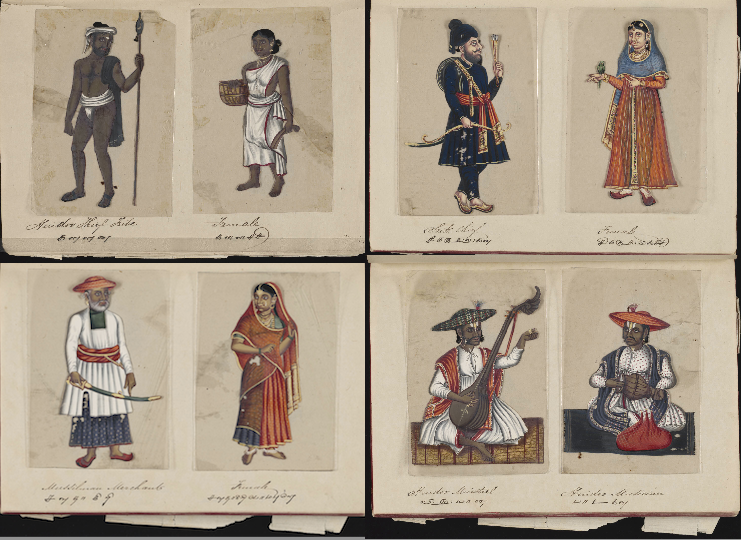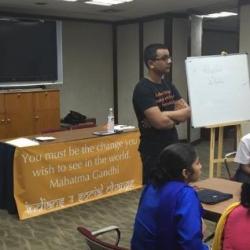#TransformationTuesday: The Caste System

This article is the first in a series of #TransformationTuesday articles that will look at the past, present, and future of social justice issues in India to create a more profound understanding among both Indians and non-Indians alike about issues that are much more complicated than they appear on surface. Yet, we do not expect these articles to serve as a source of all knowledge about the topics we cover; rather, they should help create a basic understanding that can be expanded with further research.
—–
The caste system is one of the most widely taught aspects of Hinduism and India in schools around the world. Sadly, the limited explanation of it creates a belief that the caste system was an obvious evil and that it heavily plagued and still plagues India. This understanding of the caste system is erroneous in its value judgement and simple minded in its description of the past and present of the caste system.
A study by the Harvard Medical School and the CSIR-Centre for Cellular and Molecular Biology (CCMB) found that the caste system began around 2000 years ago, years after Hinduism had its first roots. This is when the genetic mixing of ethnic groups stops and the endogamy began. So no, the caste system is not intrinsic to Hinduism anymore than the monarchical systems were, but they were a result of sociological stratification that took place in all parts of the world (Japanese and European Feudalism). As more ethnicities began mixing on the Indian subcontinent, those who wanted to create order and structure began to enforce birth-based social class.
The religious school of thought believes that every varna (class) was made up of one of the parts of the first man, Purusa:
The Brahmin [Priest] was his mouth, his two arms were made the Rajanya [Kshatriya, king and warrior], his two thighs [loins] the Vaishya, from his feet the Sudra [servile class] was born.
This established the origins of difference in social classes, but were largely based on occupation rather than birth, and mobility and interaction were common. It was also commonly understood that all parts of society were equally important, just as each of the body parts they represent was important. This changed during the period in which the manusmriti was written. It was a text that provided the rules and expectations for every member of society and was the first text to ban intermarriage between the castes. The text was meant to provide more concrete examples of Dharma for all members of society. This is what took the Hindu concept of varnas and made it into the modern-day caste system that haunts India.
The belief went that at the end of each life, the person’s soul was reincarnated (reborn) in a new material form as a new being. Depending on their Karam (actions) in their past life, they would either move up or down in the social ladder. If you were very virtuous, you could even jump rungs on the ladder, so that a Sudra could be born as a Brahmim in the next life. It also worked the other way around, so that if you were sinful, you would move down. This made your current social location your responsibility, but also provided hope for the future.
The four group caste system barely gets into the intricacies of a system that includes thousands of sub-castes that are determined based on your occupation, e.g. there was a caste for scribes, and one for artists, and one for the royals. These sub-groups further enforced strict marriage rules, and created a system of dharma that not only related to your family or kingdom, but also to your colleagues and neighbors.
The other main group was the untouchables, Dalits, which were responsible for handling human waste, and therefore considered impure. Their role in society was important, and it seems logical that in a time of little disease control and waste management, isolation was the best tactic. Obviously, this no longer makes sense in modern times, where those who handle human waste are able to protect themselves from the dangers of their job. The untouchables also included the morbidly sick, criminals, and others who threatened the stability of society. Mahatma Gandhi made a huge step towards societal integration with the Dalits by eating meals with them and changing the name of their caste to Harijans (meaning: children of god). Keep in mind that Dalits (or the untouchables) were not a caste created by the Vedas, but by society.
In times of rule by the Muslim empires, the Indian caste system became much more about local villages, than about large scale social stratification. Brahmins lost almost all influence and power, as the Muslim empires stopped the flow of royal cash to temples. Many warriors and rulers were killed, and the remaining merchant and servant class practically became one. It wasn’t until the end of the Muslim rule that the caste system became an important part of Indian life again.
Many of the lower castes found themselves easily converted by Buddhism and other religions, which promised them a more egalitarian society. Especially Buddhism, since one of it’s largest changes to Hinduism was the removal of the caste system and the belief that there was no divine origin for a hierarchical system.
The caste system was used by the British to better control Indians. They created restrictions on employment that hadn’t existed in the past, and solidified the idea that one must not interact with those of the different castes. The British misunderstood the caste system as an economic class system and thought that the Brahmins would be the most well-off. For this reason, they kept higher positions in their colonial establishments for the Brahmins. In reality, the Brahmins were highest in spiritual class, but often the lowest in the material sense. These types of fundamental misunderstandings greatly affected both their ability to rule and also the impact their rule had on the Indian people.
When India wrote its constitution, it outlawed discrimination based on castes and established quotas to be met (affirmative action policies) to help change the social situation. They have implemented these quotas both in government, education institutions, and many other places that are necessary for social power. In modern day India, the four castes as defined by the Vedas have become indistinguishable based on societal roles.
However, families do still put a large emphasis on caste when choosing spouses, and families punish those who deviate from this system. Though, personal preference is probably fine, and makes sense when considering the familial bonds that accompany Indian marriage, a country that wants to progress should see further deviation from the more conservative attitudes that enforce the rules harshly. It is important to note that these super conservative groups are in the minority now, and that the negatives of the caste system have largely been removed.
One person tells the story of a housekeeper his family employs who insists on continuing her work. Her son, who has gained social mobility and received high-level business jobs, insists she quit. Yet, in order to meet her social responsibility, she continues to work. This form of self-stratification is one of the largest factors in the lingering effects of the caste system. A beacon of hope is current Prime Minister contender, Narendra Modi, who is from a caste that traditionally wouldn’t have achieved power within the old system. Steps still need to be taken to overcome the current discriminatory and violent acts that take place against Dalits, but hopefully as we see more Dalits gain power, this will be achieved. The emergence of institutions that work to change the social position of those most affected by the caste system gives hope for a future where caste plays no role in one’s quality of life.
This is not to say that Indian social structure is free from hierarchy or problems. It’s not. One need only look at any of our other articles for examples of social power that are perpetuating massive systems of oppression, which create a modern-day caste system simply based on new factors. This article was only meant to examine the changes that the system based on Hinduism went through. New systems of class have emerged powered by wealth, corruption, and patriarchy. These are systems we must continuously work to eradicate.
—-
Was the varnas system an evil idea? Probably not. Did it cause massive social issues? Yes. Have all the problems been resolved? No. Is it better now than before? Absolutely.
[Image Attribute: Seventy-two Specimens of Castes in India]When Gandhiji dreamt of India’s future, he had said that the country will attain the real freedom only on the day when a Dalit would become the President of this country
–Prime Minister, I. K. Gujral when, a Dalit, K. R. Narayanan, became President of India





